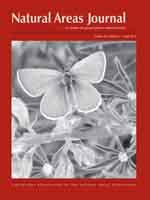This paper highlights the importance of private lands for habitat and species protection and the challenges of engaging private owners of critical natural habitat in conservation programs. The literature points to similar attitudes among owners of agricultural and recreational properties. In the case study, a landowner's conservation attitude and behavior was assessed prior and subsequent to conducting a botanical survey on a critical habitat where a Michigan State threatened species and rare plant were identified. Learning of the at-risk species strengthened interest in conservation but not for protecting the rare habitat in a conservation program, despite positive experience with an agricultural property.
Agricultural property owners view conservation as normative social behavior and face quantifiable financial challenges and opportunities when weighing conservation options. In contrast, owners who purchase property for wildlife enjoyment may be more confident of their ability to independently engage in conservation and fearful of government interference and loss of privacy should critical species or habitat be discovered.
Behavioral theory informs strategies to promote private land conservation and should consider type of land use, expected conservation costs, and level of intergenerational nature engagement, among other factors. For example, in families where only the older generation is engaged, the emphasis would be on purchasing land or conservation easements. For conservation-minded families, the strategy might be to encourage biological surveys and offer conservation assistance while safeguarding privacy.





